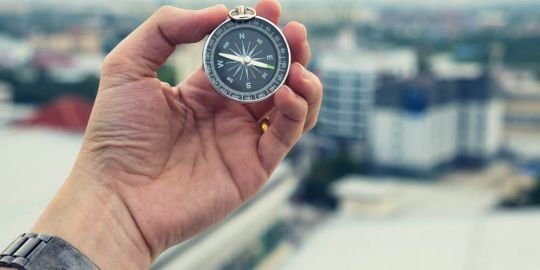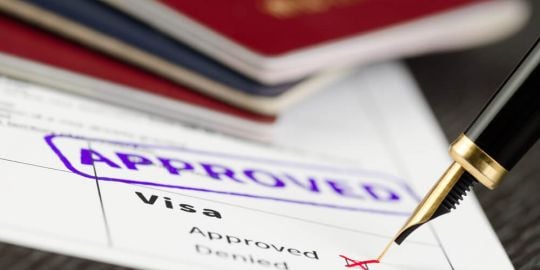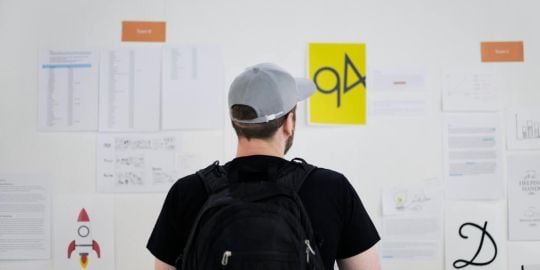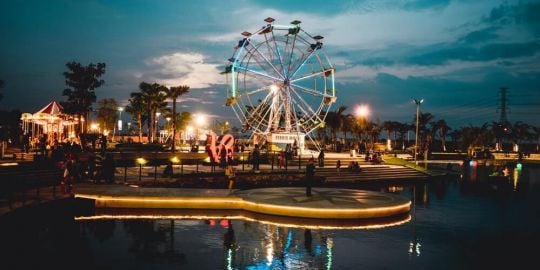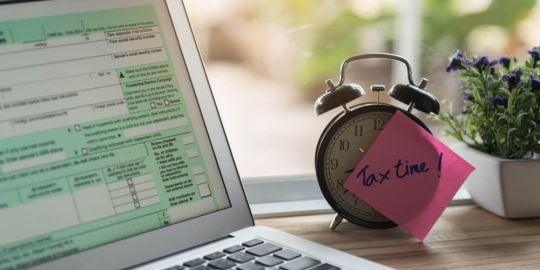Hello,
Before moving to Nepal, it is important to investigate the cost of living in the country.
As we did in 2015, we give you the opportunity to share your experience and tell us more about products and services average recorded prices in your town/city/area.
Don't hesitate to let us know if the cost of living in Nepal has decreased or increased in the past few years.
Thanks to your help, would-be expatriates will have the opportunity to refine and better prepare their expatriation project.
> How much does it cost to rent an apartment/house in Nepal?
> How much do you pay for your public transport tickets (bus, subway, train, tram)?
> Staple food: what do people eat and how much do they pay for basic food like bread, rice or pasta?
>What is your monthly grocery budget?
> How much does it cost to see a physician/doctor/specialist in Nepal ?
> What is your children's schooling monthly budget?
> How much does it cost to fill up your car's fuel tank?
> How much do you pay for electricity/gas/water etc.?
> How much do you pay for your Internet/phone subscription?
> How much do you pay for your lunch pack on weekdays?
> How much do you pay for an espresso coffee?
> How much do you pay for a cinema ticket?
> How much does a gym membership cost in Nepal?
Thank you everyone!
Priscilla
Cost of living in Nepal - 2017
How much does it cost to rent an apartment/house in Nepal?
In Pokhara, i rent for 20k to 25k but i'm looking for cheaper. It has not been easy to find a one bedroom apartment and almost impossible to find anyplace that is quiet. Like not having to listen to hammering all day long.
> How much do you pay for your public transport tickets (bus, subway, train, tram)?
I have taken a van once to town central for 40npr and a taxi tried to charge me 400 for the same distance.
> Staple food: what do people eat and how much do they pay for basic food like bread, rice or pasta?
Vegetables are cheap. 80 to 90npr per kilo for broccoli, tomatoes, cauliflower depending upon supply/demand. Eggs are 15 rupees each. Bread from german bakery 60npr a half loaf, milk-european 350 liter, india 205 liter Bacon: 300/600npr 250gr/500gr, spaghetti 90-175npr(good pasta is expensive) , small jar of spaghetti sauce 400npr, can of mushrooms 100npr, basically all western imports are exprnsive. Vegetables are cheap. I dont eat much meat. Paneer cheese is cheap. I dont remember weight/price. I don't eat rice or lentils at home. Potatoes are around 60npr per kilo. Sugar 85npr kilo.
>What is your monthly grocery budget?
I don't budget.
> How much does it cost to see a physician/doctor/specialist in Nepal ?
Never seen oneyet
> What is your children's schooling monthly budget?
No kids
> How much does it cost to fill up your car's fuel tank?
I walk
> How much do you pay for electricity/gas/water etc.?
Gas is 1325 per cylinder. 1400 to 1500 if delivered. Electricity is usually included in the rent but i think it's 17 per unit. A 20 liter bottle of water is 600. 500 for the bottle and 100 for the water. Return bottle when you need more and just pay 100. In stores, one liter bottles are 25npr for local brands.
> How much do you pay for your Internet/phone subscription?
I bought a chip thing from ncell and just buy more time as needed.
> How much do you pay for your lunch pack on weekdays?
I dont eat lunch
> How much do you pay for an espresso coffee?
80npr
> How much do you pay for a cinema ticket?
Don't go
> How much does a gym membership cost in Nepal?
I walk everywhere
The cost of things has gone up somewhat after the earthquakes and border closing from India, but things are still pretty cheap.
If you are looking for a furnished apartment in Kathmandu it can cost as much as $400. However, you can subscribe to the Google group KTMKTM and find many good deals. Outside of the capitol city you can find furnished apartments for about half that. Kathmandu is pretty polluted to live there full time, so try a higher elevation in one of the surrounding villages (Pharfing, Changunarayan, Bhaktapur, Kirtipur, Kopan, etc.). I think it's best to come and take a room in a guest house while you look.
If you go too far from Kathmandu transportation is a problem. I have a car and driver on standby for me and he charges me around $30 to take me for the day to Kathmandu. I live outside the city in a village up a bit higher so there isn't much pollution, at all.
Living in Nepal is great if you don't waste too much money not knowing the short-cuts, but even with wasting money and eating western food it's still do-able for less than $1,000 a month. We really get spoiled to how cheap things are and I have to laugh when I see an expat saying how expensive Western stuff costs. Usually whatever you want is the same price or slightly less for imported, Western food like pasta. It's almost $1.50 for a package of Italian pasta here. Imported wine and beer are more expensive here and upper shelf hard liquor is about the same as in the West-maybe a bit less (I'm not a drinker).
Coconut oil is about $4 a liter, but Italian olive oil is about $11 or more unless you want palmace, which is a couple dollars less. There's a big learning curve for living in Nepal. That's why I continue to blog about life here.
Hello All!
Like everywhere I suppose, the cost of living has gone up dramatically in Nepal over the years.
When I first went to Nepal after my retirement more than a decade ago, the cost of living was really low. I remember I could stay at the Pilgrims Hotel (as it was called at that time) in central Thamel, for 250 rupees a night!
I can still remember an egg costing 5 rupees apiece at the most! Now it must be 15 or more rupees!
In the good old times, taxi fares at least in the city went by the meter.
Nowadays, few are the taxis who even use a meter! This is why, personally, I resorted to always use the same taxi drivers, to avoid endless haggling over prices. And I found that when taxi drivers know you personally, the fares become quite reasonable.
From my personal perspective, I am talking about a period which is spread out over many years, so no one should be surprised to see prices evolve! And in Nepal, there are always shortages or blockages of some products or commodities at the border or some other major event which suddenly takes place and completely distorts the price structure. Take the cost of a bottle of gas.
I can remember when not so many years ago, a bottle of gas cost 2500 rupees....But then a crisis comes along and the price over a period as short as 2-3 weeks can double/triple/quadruple to 10000 rupes for the same bottle of gas!
To be honest, I don't know what the current cost of a single bottle of gas is and maybe a contributor can tell us what it costs in 2017? In the meantime, my question is simply this: if a man has a salary of 12 to 15000 rupees a month, how can he afford the price of one bottle of gas for him and his family while that crisis rages on, and shortages abound?
Other contributors are no doubt more up to date than me on all prices for all products.
But I can tell you, for example, that during 2016 alone, the price of one kilo of breast of chicken meat went from 450 Nrs to 600 Nrs, and now I do believe that the current 2017 kg price is 650 Nrs
Take the price of one apple....my favorite Fuji apple..... The last time I bought ONE, I paid 85 Nrs. in Kathmandu.
I never could understand, for example, how a simple cup of tea - only plain water and a small sachet of tea of whatever brand costing very little - could be priced 150 or 200 Nrs?...when the basic ingredients of that one cup of tea cost - let's face it - maybe 15 Nrs - if that?
Rents and rent rates differ from area to area, but being familiar with Thamel since 2001, when I first rented a place there, the standard yearly increase which most Thamel owner/proprietors applied to shops or apartment rents in central Thamel was a whopping 20% ...and the worst part: cumulative.
So all is well and fine if the shop which sells handicrafts or sports gear or jewelry sees a yearly increase in sales and profits, an increase in the number of tourists/visitors etc....but what happens when there is a business downturn? How can most of these shop owners sustain a cumulative year in and year out increase in rent of that magnitude if their level of sales turns down??
Take a rent of 20,000 Nrs in year one, just to prove the point
At end of year one, the shopkeeper has to pay rent of 24000 Nrs to owner/proprietor
In year 2, ........28800 Nrs
In year 3..........34560 Nrs
In year 4..........41472 Nrs
In year 5 ....... 49766 Nrs yes close to 50,000 and more than double, in just 5 years
I don't know about Pokhara and other towns but many people in Thamel complained about this 20% cumulative and yearly increase in the capital. How widespread the practice is, perhaps other contributors can write in to tell us? To the best of my knowledge, very prevalent....!
I like wine in moderation...but try to find a decent bottle of French wine - and I am not talking about Chateau wine, just a plain Bordeaux "mis en bouteille dans la region" type of thing - a Coop wine for lack of a better term....for less than 1600 Nrs from a wine shop. At today's exchange rate, that is 15 USD Nothing cheap! As for Haut Brion or a good Pommard, forget it!!
And if one goes to a restaurant, be prepared to pay for 1/3 of the price of one botte, call it around 450/500 Nrs for just one glass, and filled certainly well below the rim.....! If you want a whole bottle,
the sky is the limit....2500 Nrs and up.
If one is european, one likes cheeses....and in the biggest and largest of supermarket chain in the city, cheeses from Europe, start at 800 Nrs (gouda, not so good boxed-packed camembert etc)
Buy Yak cheese, it is better and cheaper in Kathmandu!!
Milk may be cheap, but then, ask nepalese people what they think about this milk which is sold everywhere in plastic bags....? I will refrain from commenting.....!
On the positive side, haircuts in Kathmandu are not expensive by european and maybe by other other international standards. A very good haircut, for men, on Durbar Marg or in a first class hotel is still today in 2017 only about 250/300 Nrs - In Paris, for example, the same haircut costs, yes, TEN times more! I know because I was in France just recently and paid 22 euros which is equivalent to
2500 Nrs
Good if not high quality shoes can be purchased on Durbar Marg if you know where to shop, for 10000 Nrs in 2016/2017 - I remember paying 250 euros for a Mephisto pair of shoes in Paris way back in 2004....but that was 13 years ago.....That is still no less than 25000 Nrs ...so imagine what the price is today...in EU!?
There is hope for Kathmandu but like they say, you get what you pay for!!
I think the price of a cylinder of gas was standardized to 1325np not including a delivery cost. I don't buy wine that much. I just get the cheapest brand for 360np i think. Beer is ridiculous. I am happy i don't crave it as the cost of a large bottle is as much or more than a meal. Cheese i just buy local. I treated myself to a thin wedge of real euro parm once to put on spaghetti but at 650np for that little bit of cheese, it just was not worth it. Paneer is cheap and blends well with stirfry or soup. It's the tofu of cheeses.
Let's hope that Mulder is right and that gas bottle prices have now stabilized at a price level at which people with a moderate income can afford to pay. What no one can predict, however, is when will India close the border all over again, which is what happened last time around? We can all hope it does not happen again...but when it does - I was there , I still recall - we expats had no alternative but to pay the black market price at that time, and that was 10000 Nrs, which is a lot of money by any standard.
The other point about beer prices in Nepal is well taken. It might interest readers to know, that by way of comparison, however, prices a bottle of beer in a country like Spain, for example, are currently the following if you order it in a restaurant or cafe:
Bottle of Budweiser: 2.20 euros which is the equivalent today @112 to the Euro of...........250 Nrs
Bottle of Heineken: 2,50 euros which translates into.............................................................280 Nrs
By the same token, I give up-to-date prices of a cup of coffee, also in Spain at this given point in time.
Hopefully, this will provide other contributors now in Nepal with a basis on which they can start to compare Nepal prices with those elsewhere:
Cappuccino: 2,20 euros (or 250 Nrs)
Regular cup of coffee: 1.30 euros (or 150 Nrs currently)
On a totally different register, take ATM charges:
Only about 5 months ago, in Kathmandu, I went to the ATM in Thamel and changed some money using my international card. I remember I never paid less than a flat fee of 300 Nrs and sometimes up to 500 Nrs fee to get cash. (either you agree to pay those fees, or you have to cancel - no other option being given) Note: let's be clear.... those fees were ALL taken by the local nepalese bank which operates the ATM machine. (and NOT by Visa or MC or the foreign bank. )
In sharp contrast, and again in Spain not to name it - the spanish bank there charged me a flat 1.75%
which is equivalent to 1.75 euros based on a withdrawal of 100 euros. And in nepali terms, this is equivalent to less than 200 nepali rupees. Readers can draw their own conclusions....)
It would be interesting to hear from other Expats on this subject, and expats from other countries, so when they come to Nepal, they'll have a better idea of what to expect.
Based on my personal and long exposure to Nepal, I am happy to say that there is a silver lining, like always.....to Nepal. The best dentists in Nepal are far cheaper and just as good as their european counterparts, and the same can be said for the ophthalmologists. Buy your eyeglasses in Kathmandu is my advice but you have to know where to go. I will give one clue: just off Durbar Marg....would be my choice.
Speaking of bank charges, I used to go to Rastrya Banija bank and didn't get the Nepal-side charges. When that went away I used Standard Chartered where they didn't have the charges, but that went away, too. Now I use Nabil where they still charge 500 NRS. but you can take 35,000 in a transaction instead of 10,000, a savings of over $10.
Does anyone know of another bank that doesn't charge? Which one is only 300 NRs.? It may seem trivial, but if a person spends $1,000 they can pay $50 for just the Nepal charges, not counting the bank charges from the West.
Regarding gas cylinder prices, i found an article online regarding the cost as 1325 and i also personally went to a gas shop and asked. I've had apartment owners want 1500 to 1800 a MONTH for gas. They figure we dont know the real cost and we are all rich. I set them straight. Some places wanted extra for water, electricity, gas, wifi, cable tv. Anything they can think of to squeeze an extra rupee. I always say the rent includes everything or i walk away. The most i bend to is i will pay for a new cylinder if one is needed during a long term stay. I am a single man so one cylinder lasts 5+ months. If you are moving to Nepal, find out all these prices before coming here. Knowlege is power. Regarding water...tap water should be free. The 5gal.(20L) drinking water bottles are 600 with 500 of that being a bottle deposit. When you get a new bottle, you return the empty and just pay 100 for a fresh bottle. At places i've stayed at, they usually have a supply on hand so you just pay mgt. 100 and get your bottle. Namaste☺
Regarding bank charges (Nepal-side charges) :
I have been using Standard Chartered to withdraw money with my European Mastercard for almost a year and they have never charged me anything.
Before that, I was using Nabil Bank, and they were charging 400 Nrs (or even 500, I forgot ...) per withdrawal. Other banks charge similar fees in general.
Cost of living - By the looks of it, inflation is with us, judging by the rise of food prices and all. Sure enough, the Economist Group now ranks Nepal as Asia's third most expensive country.
and costly for the nepalis too, obviously, with the great majority of the people still living on less than $2 a day (daily income). I really get a bit concerned when I read that even the older folks don't get much of a break either. I just noted that only 289,282 nepalis get social protection from the Government, which represents less than 1% of the population of 29 million. These older folks were just got an increased monthly pension, but the problem there is that - one - it is in the modest sum of 5000 rupees which is like $50 per month or $1.65 a day and - two - no one seems to know how the Government is going to pay for it. Reason there is that the Government has an outstanding debt of 32 billion rupees or about 320 million bucks. On a per capital basis, that alone tots up to $11 of debt on the head of every nepali person nationally. The present so-called "caretaker government" will have to find solutions pretty fast.

